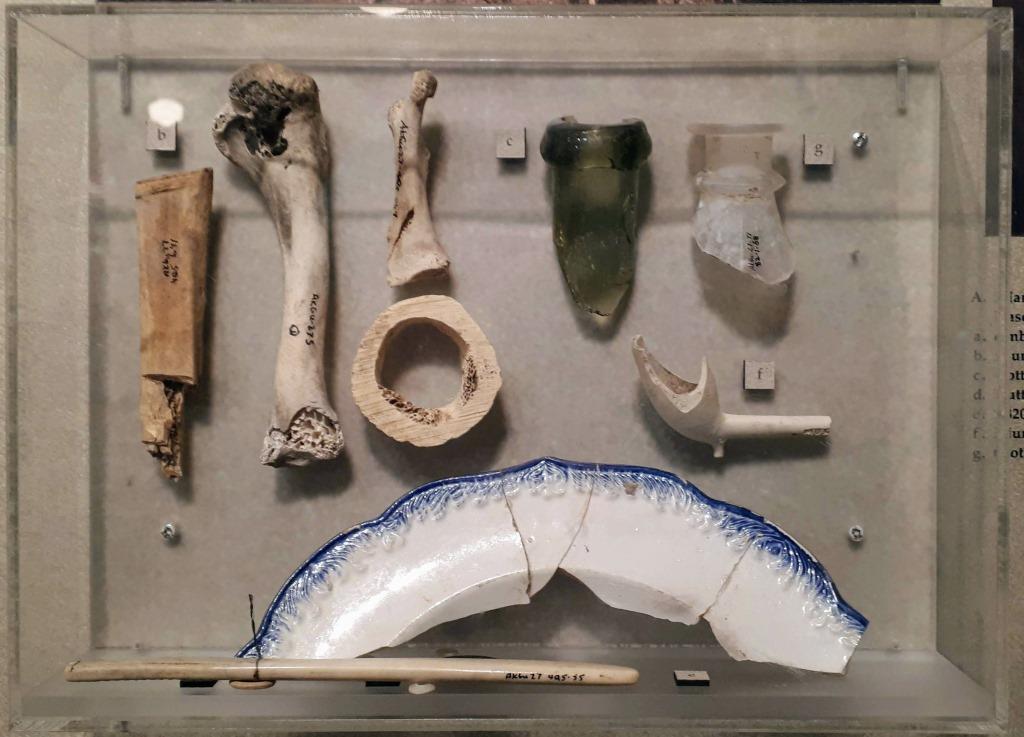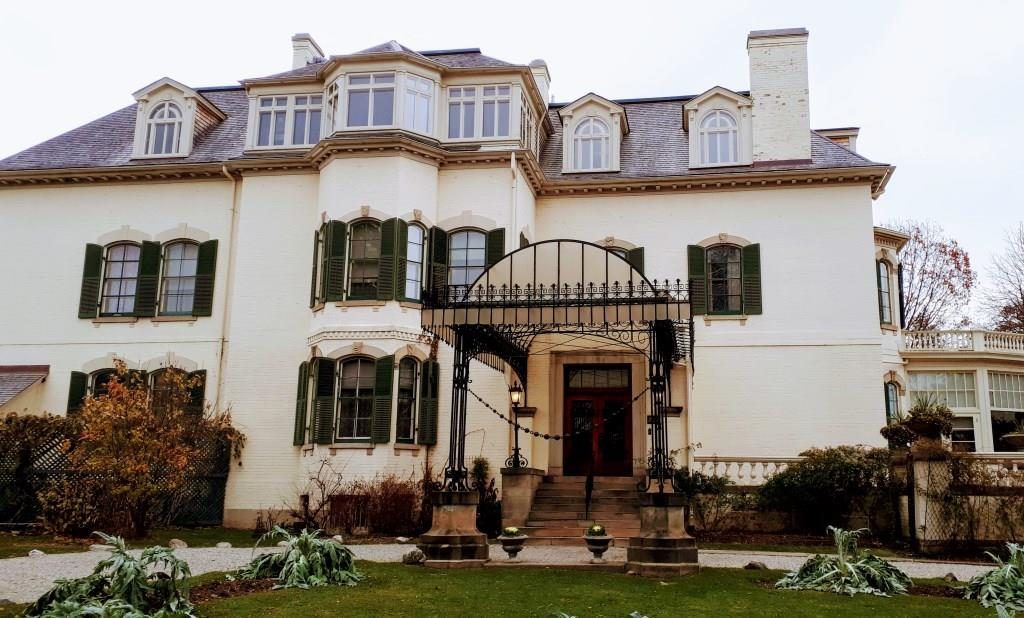On a grey November Sunday afternoon in Toronto, it was a pleasure to venture inside Spadina Museum, one of the 10 City of Toronto Museums.
My visit began with this video, Spadina and Toronto in the 1920s: An Introduction, which was very helpful in setting the home and Austin family in context.
I enjoyed an excellent tour by Historical Interpreter Celia, who pointed out many points of interest in the different rooms of the house (kitchen, bedrooms, palm room, billiard room, etc.). I was intrigued by the idea that Mrs. Austin had specially ordered that padding be placed under the scarlet wallpaper in the reception room, to facilitate quiet conversations.
Working in a historic house myself, built the same year as the last enlargement of the the three-storey Spadina house (1913), I was quite curious what similarities and differences there might be. For one thing, it surprised me that the Austins relied on gas until the late 1930s, while John McKenzie House had electricity in 1913. The reason why? “It would have been sacrilege to have electric light in Spadina House as James Austin was the head of Consumers Gas,” per this blog entry from Turn of the Century Lighting, who worked on the lighting restoration at Spadina House in 1983.
Celia directed me to check out the archaeology exhibits in the basement, which aren’t part of the tour. Neat! Lots more to see. If I understand correctly, the current building, constructed in 1866, was built on the foundations of two earlier structures, one from 1818 and another from 1836. So there should be plenty of archaeological evidence of family life over the years, and there is, plus Indigenous artefacts.

I love making connections between things I’ve learned, and here’s one. Earlier this year, I visited the Vault at One King West in the basement of the former Dominion Bank building at Yonge & King Streets. Guess who owned Dominion Bank when the vault was installed in 1914? James Austin. And guess where he lived then? At Spadina House (now Museum).
I wonder if Mr. Austin could have seen the construction of the 12-storey skyscraper of a bank building from his home, looking down from atop the Davenport escarpment. I expect he could have.
Spadina Museum is museum no. 75 in my #100museums challenge (see 100 Museums Challenge).

